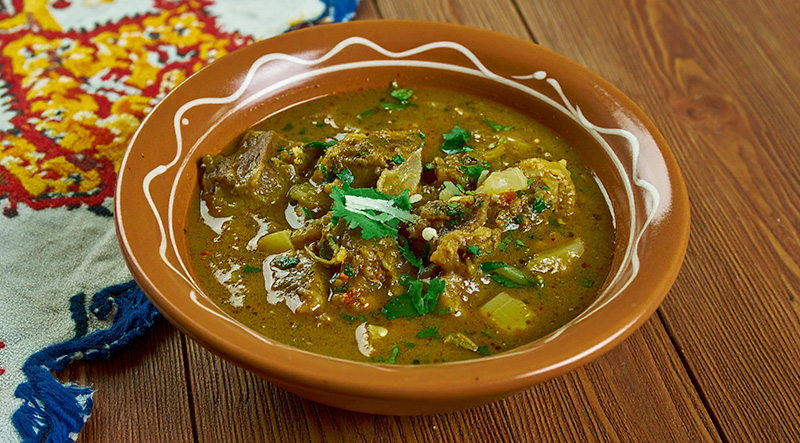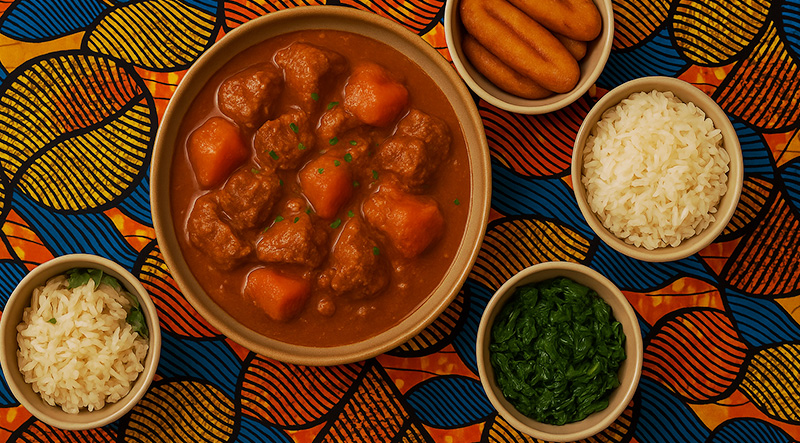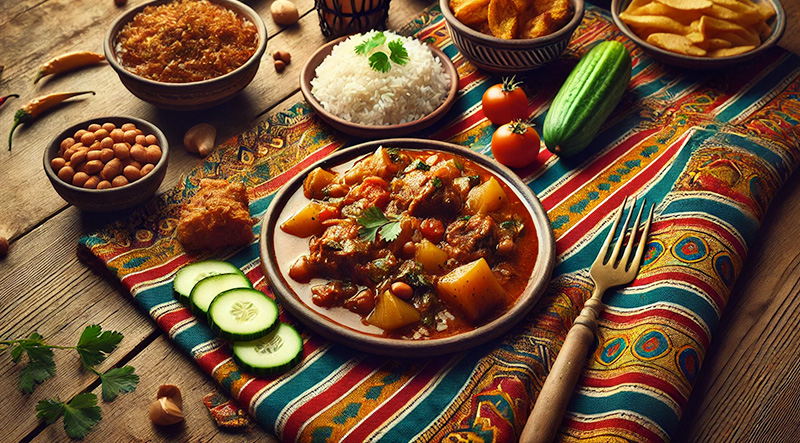The Gambia's national dish, **Domoda**, is rich, creamy, and full of strong West African flavor. It is sure to warm your heart and spirit. This delicious groundnut stew, which is slow-cooked to perfection with aromatic spices, onions, and chilies, combines succulent meat or vegetables with a smooth peanut butter and tomato sauce. Domoda offers the ideal harmony of nutty richness, mild heat, and savory depth when served over fluffy rice or millet. More than just a meal, it's a taste of Gambian tradition, with each bite narrating a tale of coziness, culture, and community. Read More...
The History of Domoda – A Bowl of Flavor and Tradition:
Rich, creamy, and deeply satisfying, Domoda is more than just The Gambia’s national dish—it’s a culinary emblem of the country’s identity, history, and hospitality. This beloved peanut-based stew has its roots in the Mandinka culture and is enjoyed by Gambians across all ethnic and social lines. With its simple ingredients, soul-warming taste, and flexible variations, Domoda has earned its place at the heart of Gambian cuisine
Origins in the Mandinka Kitchen:
The word “Domoda” comes from the Mandinka language, meaning “peanut sauce”, which reflects both its key ingredient and its regional origin. The Mandinka people, one of the largest ethnic groups in The Gambia and parts of West Africa, have traditionally relied on groundnuts (peanuts) as a vital crop—both nutritionally and economically. As early as the 19th century, The Gambia became a significant producer of peanuts, especially under colonial rule, which made them more abundant and integrated into everyday meals.
Over time, Mandinka women developed Domoda as a versatile stew: combining ground peanuts with tomatoes, onions, chilies, and whatever meat or vegetables were available. This adaptability helped Domoda spread across households of all income levels and ethnic backgrounds, becoming a unifying comfort food for the entire nation.
Simplicity Meets Depth:
Domoda’s appeal lies in its rich, nutty base, which is made by blending peanuts or smooth peanut butter with a tomato-based broth. Depending on the season and region, cooks may add beef, chicken, lamb, or fish, along with hearty vegetables like pumpkin, eggplant, sweet potato, or carrots. The result is a stew that is both creamy and tangy, often with a hint of heat from local chili peppers.
The dish is typically served with white rice—which absorbs the thick sauce beautifully—or millet, a traditional grain grown in rural regions. Whether served in a family kitchen, at a street-side eatery, or during special celebrations, Domoda is a staple that crosses class and cultural lines.
A Symbol of Cultural Unity:
Although Domoda originated in Mandinka communities, it quickly became a shared national favorite among The Gambia’s diverse ethnic groups, including the Wolof, Fula, Jola, and Serer. Its widespread popularity and unifying role earned it the title of national dish, especially as it embodies the values of community cooking, resourcefulness, and hospitality.
Today, Domoda is served not only in The Gambia but also in Gambian homes and restaurants abroad, connecting diaspora communities with the taste and traditions of home. It’s also frequently enjoyed during Ramadan, weddings, and national holidays.
Domoda in Modern Gambia:
In modern kitchens, Domoda has evolved slightly, with home cooks using store-bought peanut butter, bouillon cubes, or pre-mixed tomato paste for convenience. Yet the core of the dish remains unchanged—a rich, wholesome stew that represents the best of Gambian cooking.
It’s a dish that tells a story: of agriculture and survival, of families gathered around shared bowls, of pride in heritage, and of the warmth that comes from a homemade meal.
A Lasting Legacy:
Domoda is more than a dish—it’s a symbol of The Gambia’s culinary heart. It reflects the nation’s agricultural roots, its communal spirit, and its gift for transforming humble ingredients into something extraordinary. Whether eaten at a roadside stall or on a special occasion with family, Domoda continues to nourish not only the body but the story of a people and their land.
Brown the meat:
Add tomatoes and tomato paste:

Stir in peanut butter:
Return meat and add liquid:

Add vegetables and simmer:
Season and finish:

Serve and enjoy:
The total preparation and cooking time for Domoda is approximately 1 hour and 15 minutes. This includes around 20–25 minutes of preparation time for chopping vegetables, browning the meat, and blending the peanut-tomato base. The stew then needs to simmer for 45–50 minutes to allow the flavors to develop and the meat and vegetables to become tender. While much of the cooking is hands-off, occasional stirring is needed to prevent sticking. Domoda’s slow simmering is key to achieving its rich, creamy texture and deep, satisfying flavor.
A single serving of Domoda, based on the provided recipe, contains approximately 500 to 650 calories. The main calorie sources include the meat (beef or chicken), which provides around 200–250 calories, and the peanut butter, which adds about 180–220 calories due to its healthy fats and protein. The vegetables (carrots, sweet potato, tomatoes) contribute around 50–80 calories, and the cooking oil adds roughly 100 calories. If served with a cup of white rice, the total can increase by another 200 calories, making Domoda a satisfying and energy-rich dish ideal for a hearty meal.







